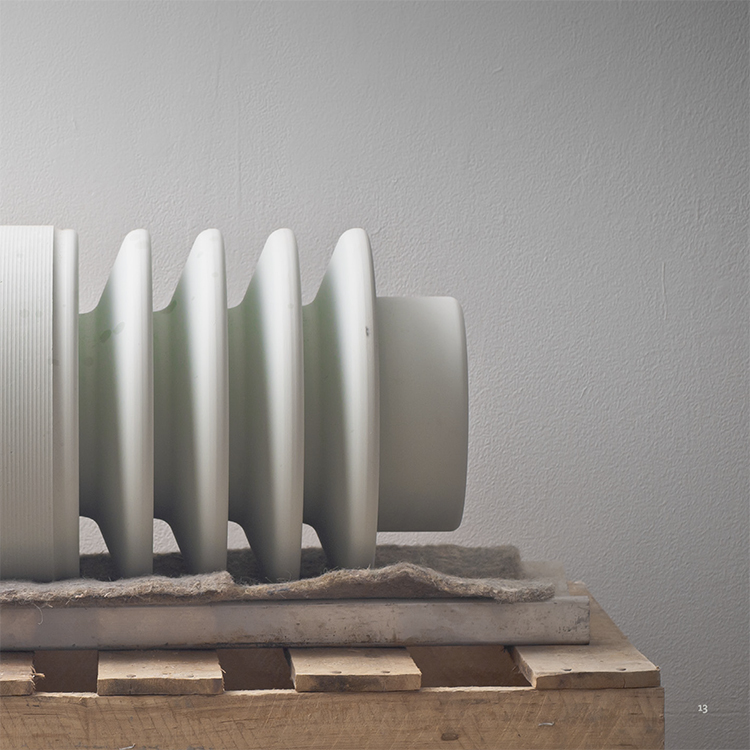We are extremely grateful to Alfred University for allowing us to put their forward thinking Raw Goods catalog in our library. This catalog, from an exhibition that took place in 2011, is available in cfile.library today. If you are already a member, view the catalog, or begin your 14-day free trial!
Raw Goods: The Transformation of Materials by Local Industries
Alfred, NY: Division of Ceramic Art, School of Art and Design, Alfred University, 2011
Currier, Anne
64 Pages
There is something sort of reassuring about Alfred University’s Raw Goods catalog. The show lacks the ego that so much contemporary ceramic art seems to be pulsing with. This absence is not wanting either; it simply derives from the fact that the people and industries that manufactured the objects in this show had no idea they were making art. They cast or carved the same object(s) everyday, a thing which was designed not for aesthetic reasons mainly but for a very specific purpose. In fact, there was no artist involved in the show.
Click to Download your FREE Intro to “Raw Goods”
The Raw Goods catalog includes stunning photos of the way these industrial objects are actually manufactured by men wearing safety goggles. Artists were not involved in the installation of Raw Goods, but instead two talented professor-curators Anne Currier and Ezra Shales arranged the show, which took place at Fosdick-Nelson Gallery, Alfred University School of Art.
Ceramic insulators, palettes of terra cotta units, milled logs, steel blades, laminated lenses, and more were transformed into art objects through the duration of Raw Goods. Everything was sourced from six manufacturers of ceramic, glass, steel and wood, local to Alfred, NY. Though not art in a traditional sense, the exhibition has a foot in the art, design and craft spheres, and draws an interesting gray area. Almost like a puzzle, each sphere is another angle from which to view each sculpture.
“To their manufacturers, these engineered objects are identified by their technical nomenclature as they move on a regimented and scheduled course toward an intended application in a competitive marketplace. As commercial products, they address and adhere to traditions, standards, codes of construction that require strict tolerances and specifications.” –Anne Currier
“Faculty members like Currier and Shales have tried to connect their academic realm to their locality and provide a model for the development of American design history that moves beyond the oft-repeated story of the decline of American manufacturing to a new story about niche expertise and innovative industry.
As such, this exhibition provides an opportunity to critically examine interdisciplinary issues of design and craft as they relate to entrepreneurship and American regional economic diversification from the final quarter of the twentieth century forward.” –From Sarah Johnson’s review in The Journal of Modern Craft.
The exhibition raises all kinds of questions about where manufactured materials fall in the context of art. Many of us have walked past a construction site and marveled at the beauty of this empty wooden frame or the partially finished masonry. Is a construction site in some way artful when relocated into a gallery and well- lit?
Click to Download your FREE Intro to “Raw Goods”

Boston Valley Terra Cotta, Hand-pressed restoration unit with glazed finish and mortar indent, 2007-2009
This catalog is available in cfile.library today. If you are already a cfile member, view the catalog, or begin your 14-day free trial!





Add your valued opinion to this post.